Is cenote diving in Mexico on your bucket list? Keen to know more about it? In this post, Dan answers the questions we’re often asked about this extraordinary diving experience, and our own adventures cenote diving Mexico.
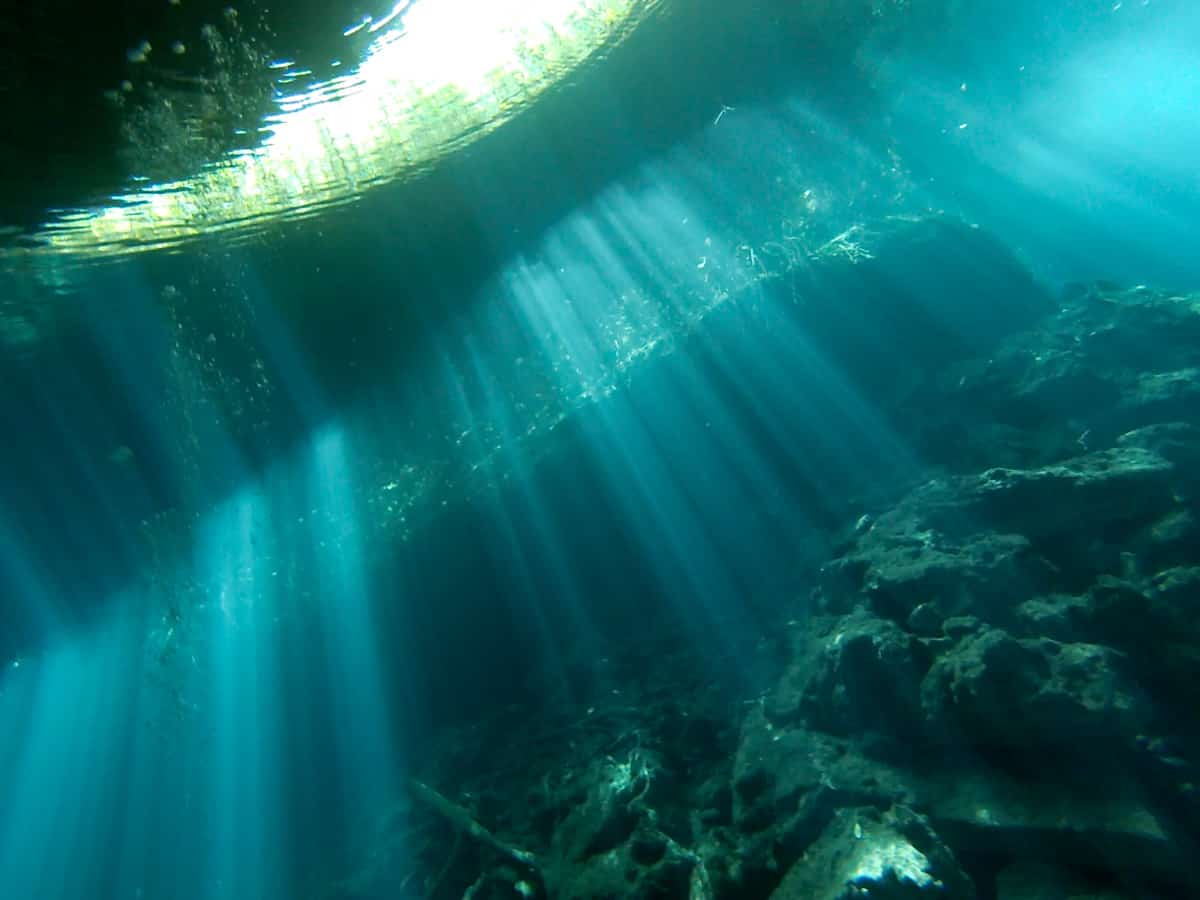
Let’s start with the facts: What is a cenote?
A cenote is a natural sinkhole in the Earth, where the limestone has collapsed to reveal groundwater. Some cenotes are open to the sky, while others can be tucked away under rocky overhangs or hidden from view completely.
Cenotes are found around the world, but they’re mainly associated with Mexico, where literally thousands of cenotes pockmark the limestone of the Yucatàn peninsula.
The ancient Mayans used cenotes as fresh water wells. They also believed cenotes were gateways to the underworld, and archaeology has revealed that some cenotes were used for ritual and sacrifice.
There’s also a link between cenotes in the Yucatán and the cataclysmic meteor that hit the region around 65 million years ago, wiping out all but non-avian dinosaurs. Special mapping techniques have shown a clustering of cenotes along the arc of the land-based meteor crater rim.
All this history and intrigue had me itching to explore cenotes before I even had my scuba diving certification. So once I finally did, cenote diving in Mexico was at the top of the list.
Watch our experience of cenote diving Mexico!
Do I need cave diving qualifications to go cenote diving in Mexico?
Cenote diving is cavern diving, and unless you’re familiar and experienced with diving in cavern and cave environments, it’s best to go with an accredited dive company and a professional guide who has cave diving certification.
While you don’t need cave diving certification yourself, you’ll need to have Open Water certification at least and, ideally, have logged enough dives that you feel confident managing your buoyancy and movement in potentially tight spaces. Some cenotes require Advanced diving certification.
What if I don’t scuba dive? Can I still visit cenotes?
Absolutely! There are cenotes throughout the Yucatán that can be visited and plenty are popular swimming and cenote snorkeling spots.
On our first visit together to Mexico, we went cycling in search of cenotes near Valladolid, and visited two beautiful cave cenotes called X’kekén (it’s also known as Cenote Dzitnup) and Samulá. We visited late in the day and were the only ones at both. They were perfect for swimming and are just two cenotes near Chichen Itza that can easily be visited.
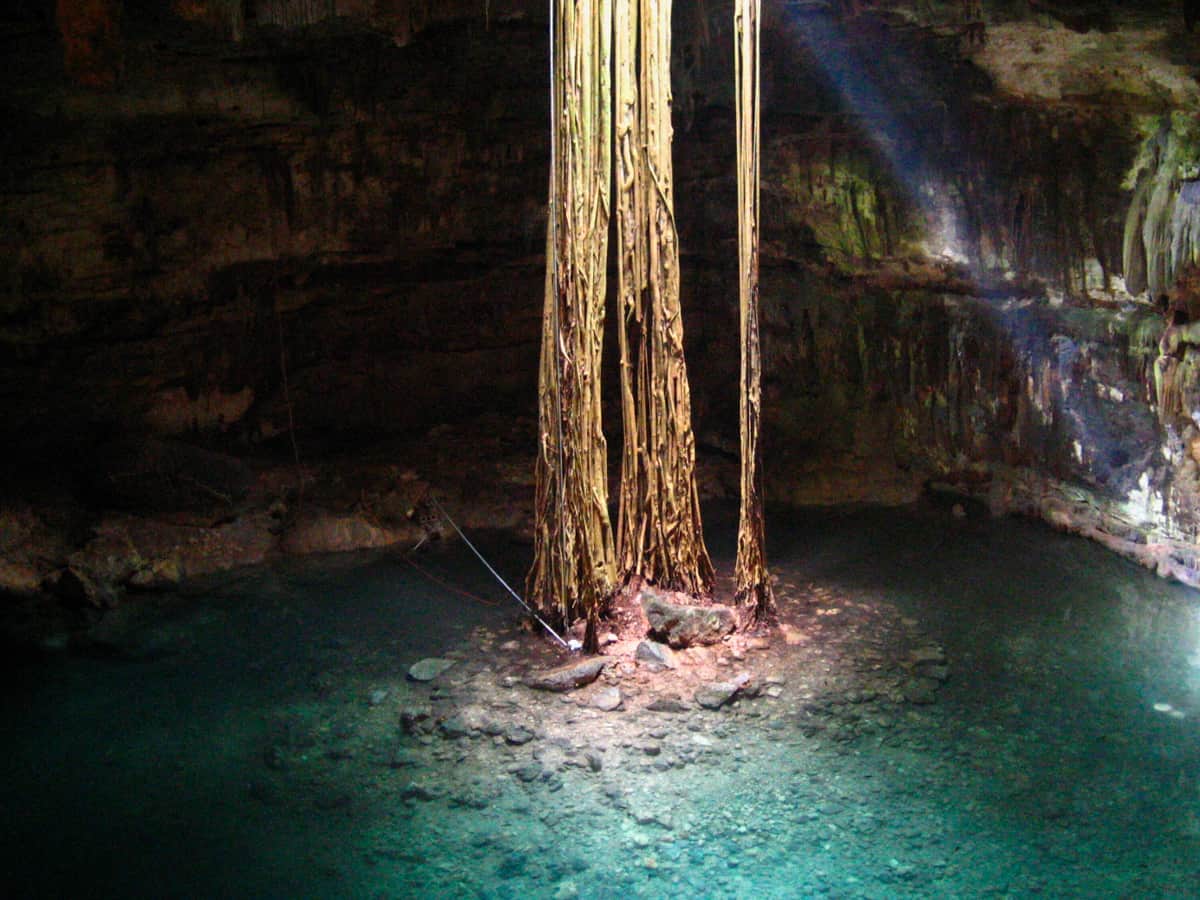
There’s also a lovely collection of cenotes near Playa del Carmen that are great for swimming and hanging out. One of these is El Jardín del Edén cenote, about half an hour south of Playa del Carmen, the first of our epic cenote diving experiences.
Jardín del Edén is a vast, jungle-edged pool with lots of little fish zipping among rocks covered in vivid green algae. While it’s relatively shallow at Jardín del Edén, the water gets deeper to one side before disappearing under a rocky overhang. This is the gateway to the cavern, where the cenote diving magic happens.
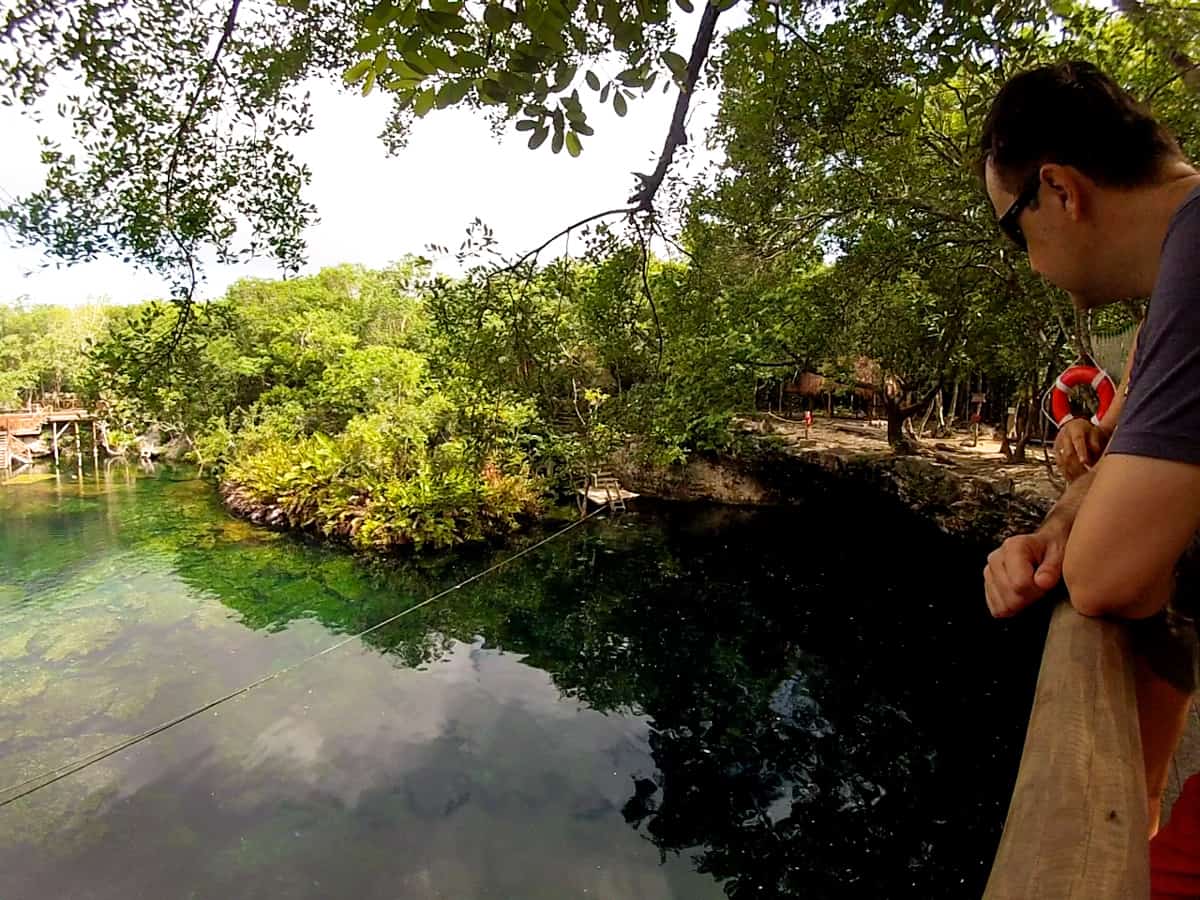
What can I expect when I go on a cenote dive?
We dived two cenotes on one day during our last visit: Jardín del Edén and Tajma Ha. For both dives we had a cave diving certified guide who made us feel 100% safe and comfortable.
At both sites we had detailed briefings, learning about the sites and looking at maps showing the cavern systems. This was particularly detailed for our dive at Tajma Ha cenote, which is actually three separate cenotes linked by a series of flooded passageways.
We discussed the environment and what to expect. We talked about the importance of staying within sight of each other and the guideline, managing buoyancy, and learning hand signs and signals using a torch.
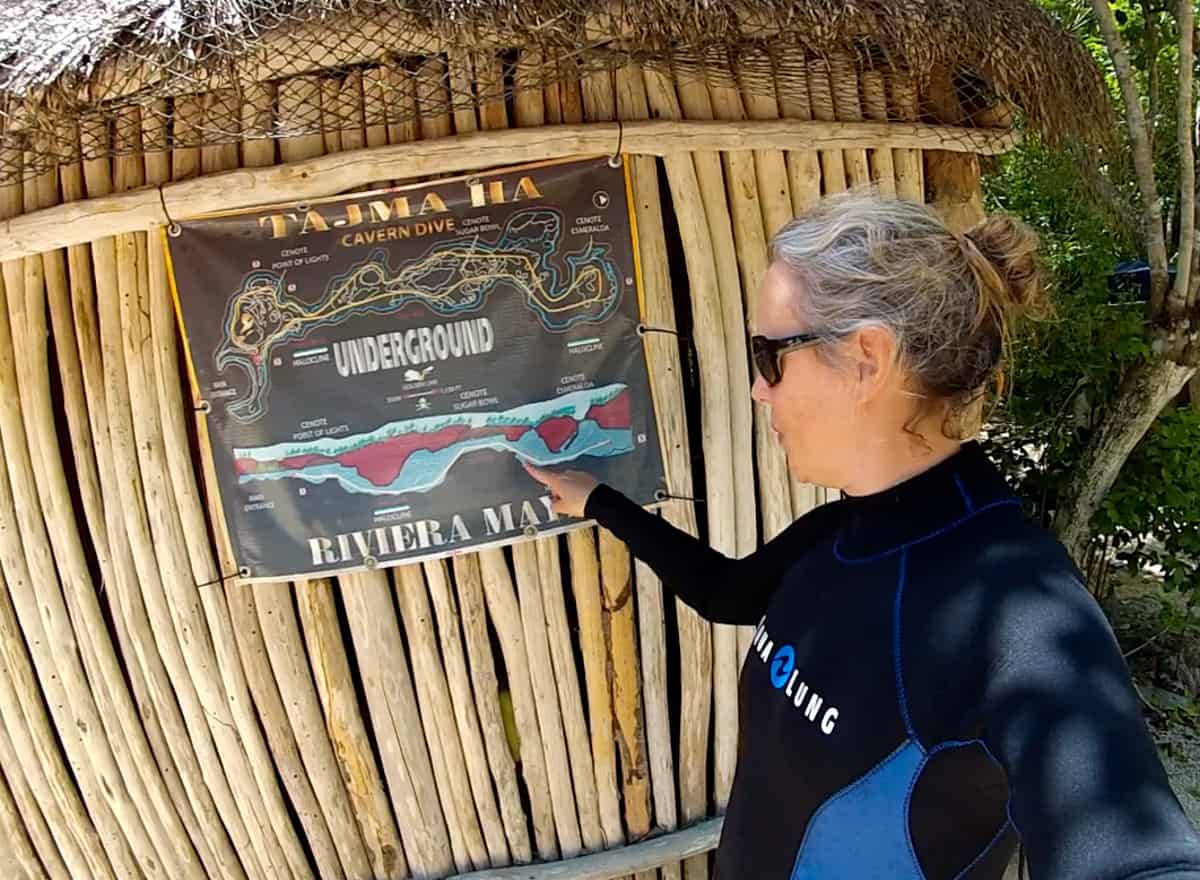
Following the guidelines
Guidelines are a critical safety component for cenote diving. These strings mark out a safe route to and from the cavern entrance. At some sites, like Tajma Ha, there are permanent guidelines in place. At Jardín del Edén, our guide unspooled a line marking out our route. In both cases, we followed her in and out.
At Tajma Ha, warning signs declaring ‘no pase’ stood guard at junctions and passageways marked as unsafe or unexplored. Seeing those signs was a solid reminder that while cenote diving mexico is magical and surreal, it’s also an experience that must be taken seriously.
Water clarity and haloclines
One of the most striking aspects of a cenote dive is the water clarity. Cenotes are filled mainly with fresh water which has slowly filtered in through the limestone, so it’s often crystal clear. Divers look like they’ve cast off the shackles of Earthly gravity and are gently drifting through the air.
Sometimes divers will encounter a halocline at lower depths, where fresh water mingles with heavier, denser salt water leaching in from riverways. Haloclines create a strange blurry haze, which reflects torchlight: it can look like a shimmering lake under the water. It’s difficult to describe, but dreamy and beautiful.
Maintaining buoyancy
Maintaining buoyancy and control is critical when cenote diving, which is why it helps to have a few dives under your belt before trying this dive experience. Navigating passageways and rockfalls requires lots of ups and downs, while staying close to the guideline, and managing your movement to avoid kicking up silt or damaging the delicate rock formations.
There’s generally very little current in cenotes though, which means you can move slowly and carefully, and take it all in.
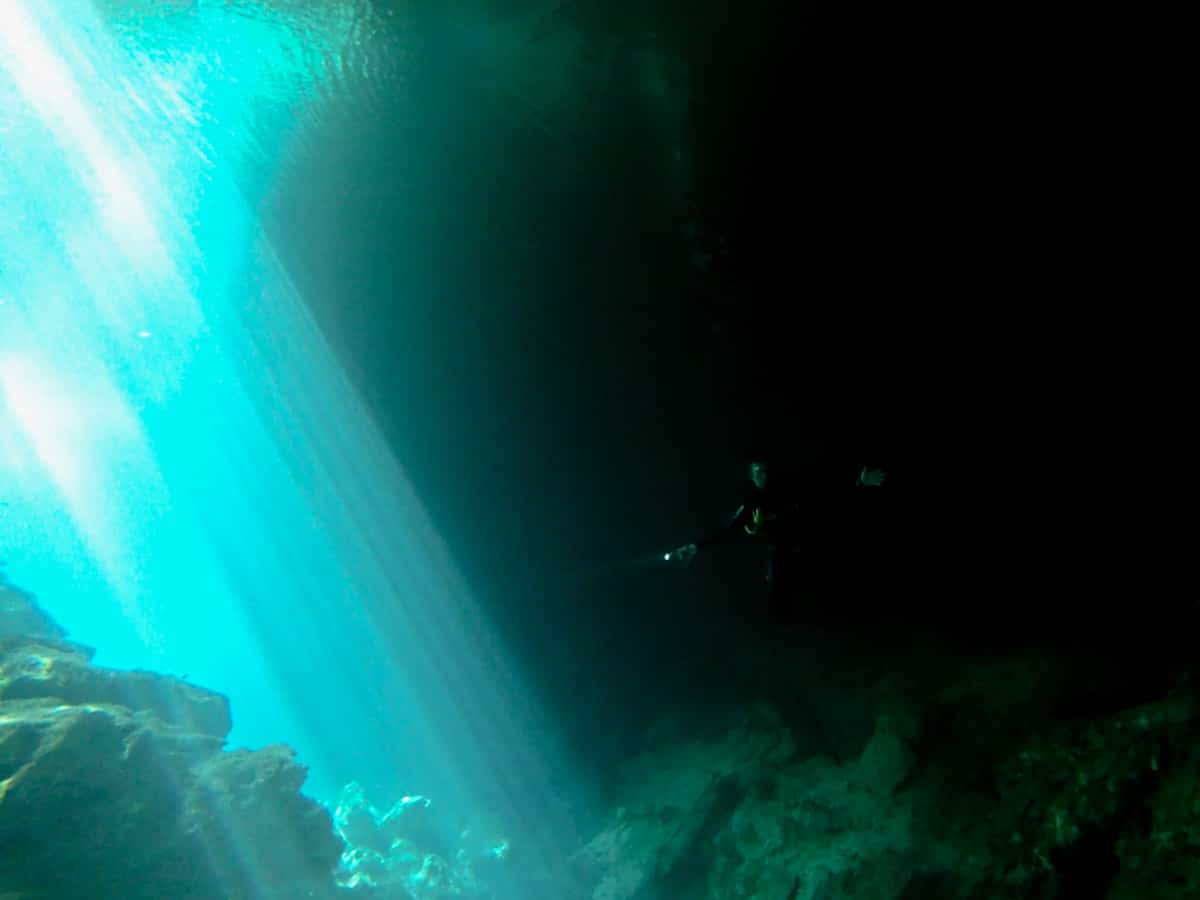
What is cenote diving really like?
How to describe cenote diving? It’s otherworldly. Eerily beautiful. Silent and still. When the light is right, it creates spectacular, shimmery curtains of blue under the water. It’s like no other scuba diving experience out there.
Cenote diving is definitely thrilling! Just being in this silent underworld of ancient rock formations, prehistoric fossils and entrancing light shows, is a pure adrenaline rush.
We found it almost meditative, but definitely not scary. Our guide was excellent, and we were fully briefed on what to expect and what to do if there were any concerns along the way.
We share more about what it was like to explore the watery realm of Xibalba in our post on cenote diving in Mexico for adventure travel site NOMADasaurus. Check it out here.
Cenote diving can involve dark, confined spaces, which isn’t for everyone. That said, some cenotes are wide, open and light-filled. Others, like Tajma Ha, involve navigating stretches of narrow, dark passageways between large cavernous spaces.
Definitely talk with the dive company beforehand about what you’re comfortable with, so they can suggest the most suitable cenote for you to dive.
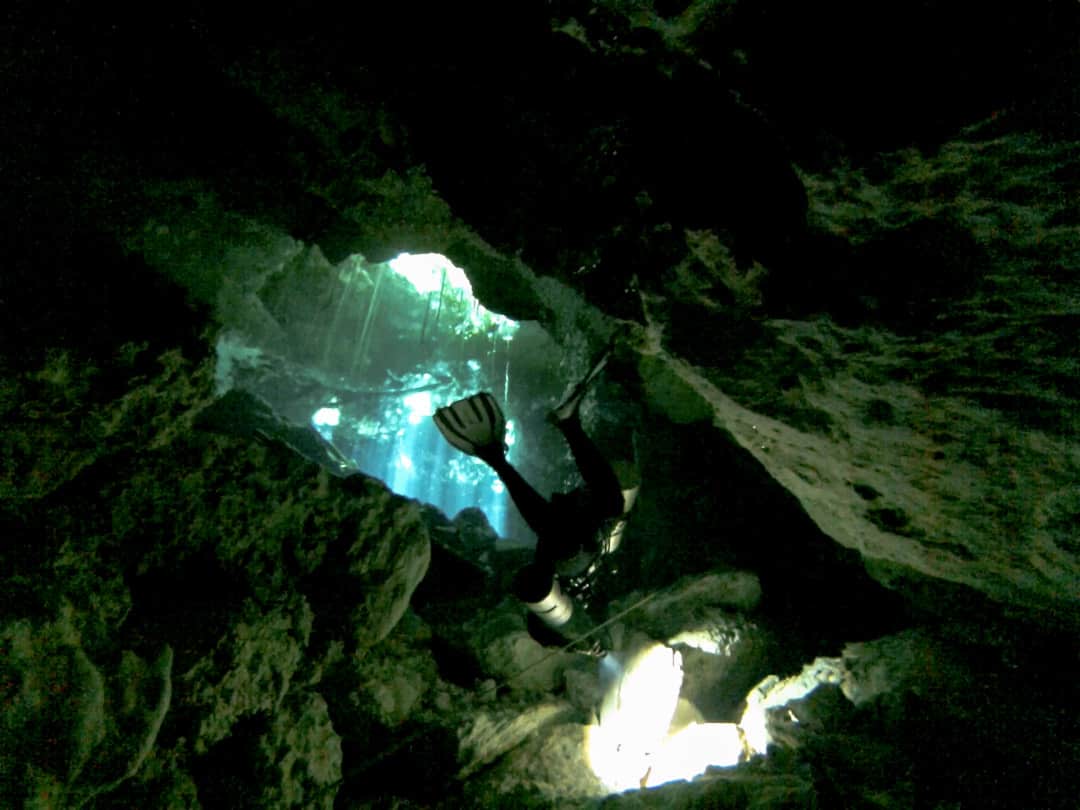
What will I see on a cenote dive in Mexico?
Cenotes are formed by collapsing limestone, and the landscape you explore on a cenote dive is completely unique to each location.
On our dives at Jardín del Edén and Tajma Ha, we encountered fascinating rock formations, stalactites and stalagmites, as well as ancient fossils from a time when the limestone was a living reef under the sea.
Given the special conditions of a cenote, the wildlife isn’t as abundant as a coral reef, but it’s there if you look. On our dives, small black cat-fish moved slowly beneath the surface. When we popped our heads above water in Tajma Ha’s linked cenotes, like Sugar Bowl, tiny bats flitted about the cave above.
By far the most striking feature of a cenote though is light. Sun rays bend as they pass through the water of a cenote, casting shimmery, unearthly, mesmerising beams of blue.
Experiencing a cenote light show however, is a case of being in the right place at the right time.
It can depend on the layout of the cenote, the weather, the time of year (it’s said to be best between May and September), the time of day. Dive companies will be in the know on the best times to dive certain cenotes to see the light doing its thing, but if you can, try and go on a sunny day at least.
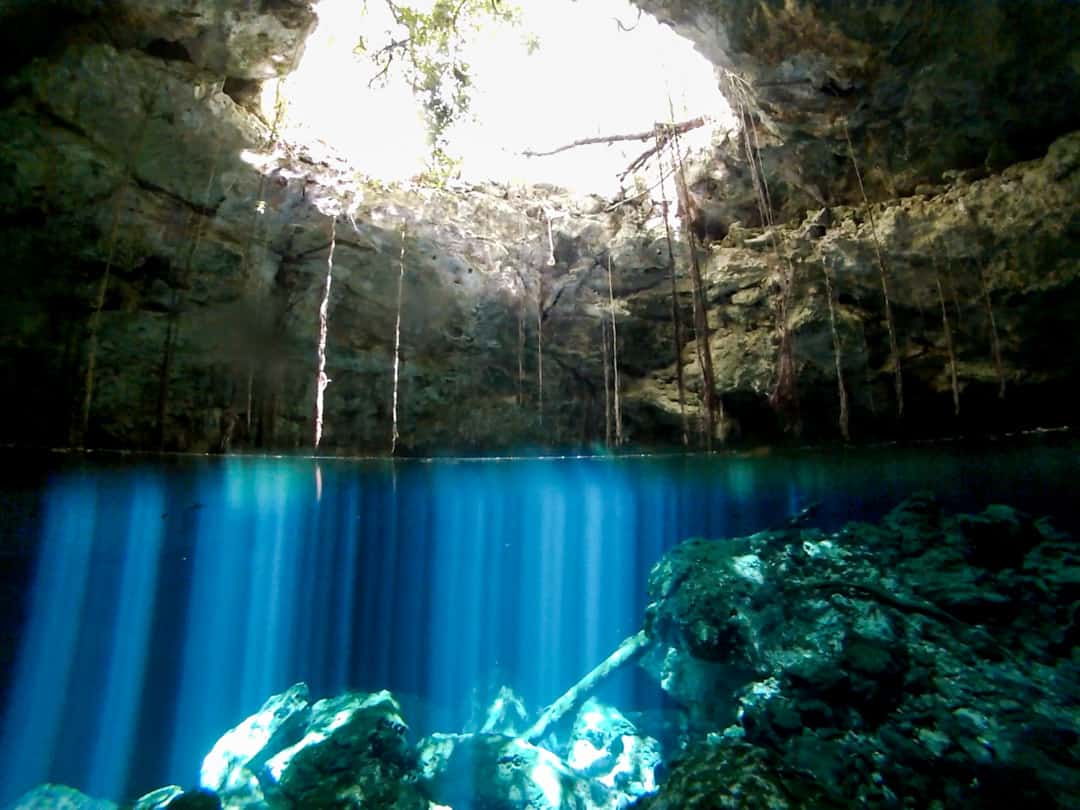
Is it cold diving in a cenote?
A bonus of cenote diving Mexico is the temps. It was 35 degrees and humid outside when we dived in June, which made for a seriously sweaty gear up and prep. Especially at Tajma Ha, which requires a short hike through jungle in full dive gear to the cenote entrance.
Underwater however, the cenotes were a pleasant 25 degrees. In fact, the only time we noticed temps at all was when we dipped into a salty halocline where the degrees went up a notch, and then reemerged into the colder fresh water above.
Our dive company gave us 5mm wetsuits at any rate, along with all the other gear we needed for a cenote dive, including torches.
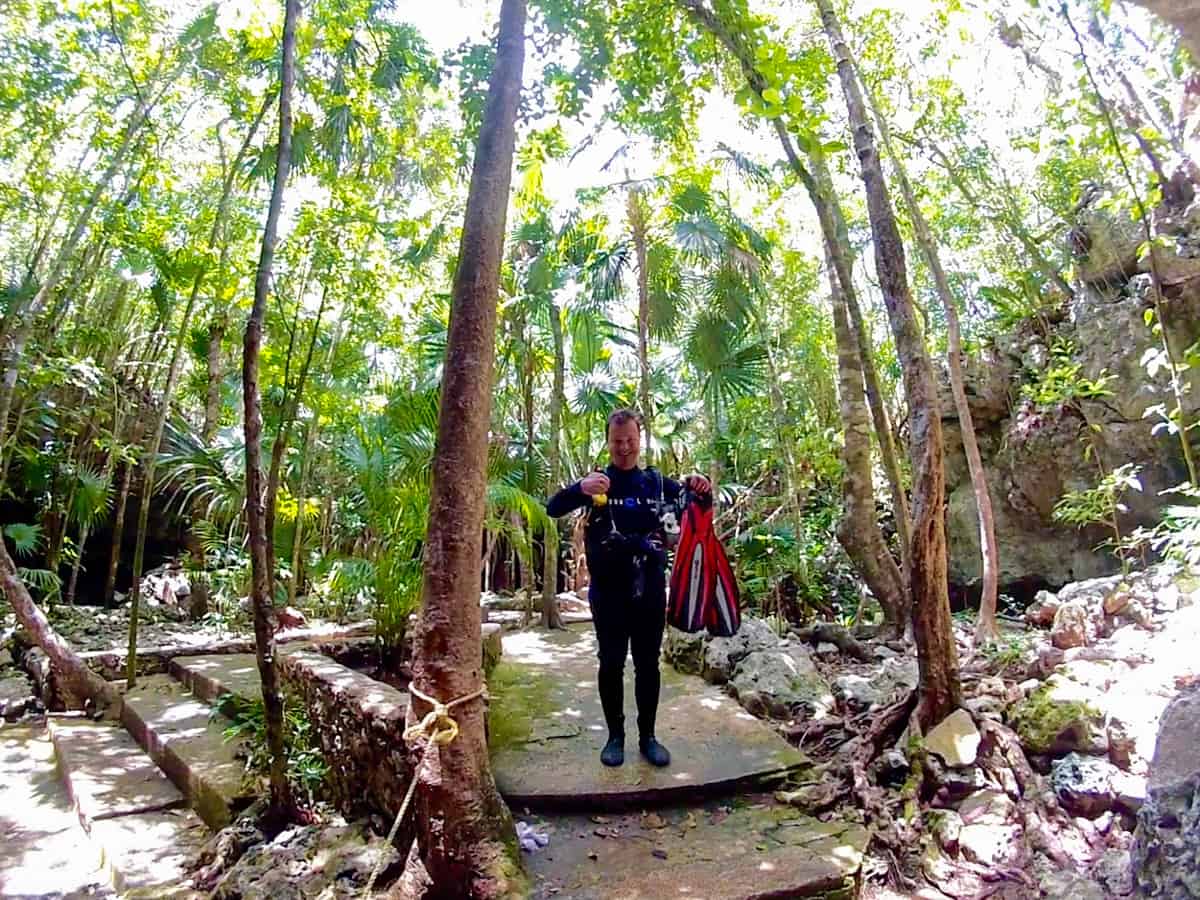
What other diving can I do in the Riviera Maya?
In my book, cenote diving may just be the best diving in Mexico, but there are other beautiful and unique diving experiences to be had here, especially around the Riviera Maya.
Like searching out the bizarre splendid toadfish in the reefs off Cozumel island. This shy, unusual fish is endemic to the crystal clear waters here, and a highlight of our Cozumel scuba diving trip.
Swimming with whale sharks is another popular water-based experience out of Cancun. Unfortunately, what we experienced wasn’t a trip we felt comfortable recommending to others. Read why here.
Other dives on our bucket list include the MUSA underwater gallery at Punta Nizuc off Cancun. And diving with bull sharks off Playa del Carmen, a seasonal experience between November and March. I may need a bit more time to work up to that adventure though.
Then, of course, there are all those other epic cenotes! Will we be back? No question.
Have you been cenote diving in Mexico?
We’d love to hear about your experience in the comments below!
